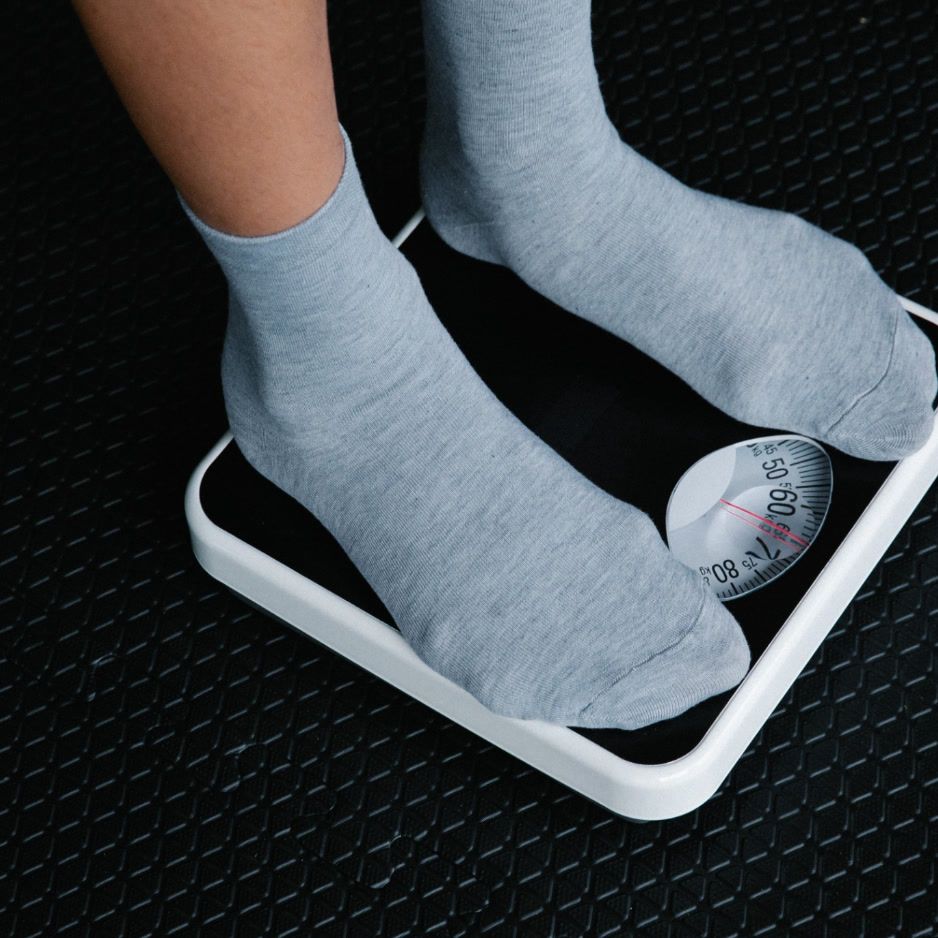A Guide to Female Body Types: Shapes, Health, and Composition

A Guide to Female Body Types: Shapes, Health, and Body Composition
Female body types are commonly classified into five main shapes—hourglass, pear, apple, rectangle, and inverted triangle—based on where your body stores fat and your natural proportions. Additionally, fitness professionals use three somatotypes (ectomorph, mesomorph, endomorph) to guide workout and nutrition strategies based on your body's natural tendencies for muscle gain and fat storage.
Understanding female body types provides actionable insights for better health, fitness optimization, and informed wellness decisions. Whether you're investigating cardiovascular risk factors, optimizing your workout plan, or understanding what your body composition reveals about your physique, knowing your body type matters.
This comprehensive guide will explore:
- The five common body shapes (apple, pear, hourglass, rectangle, inverted triangle) used in health and fashion assessments
- The three fitness-focused somatotypes (ectomorph, mesomorph, endomorph) that guide training and nutrition
- How fat distribution patterns affect health risks and disease development
- Why DEXA scanning technology can detect "hidden" risks that external appearance can't reveal
The Shape-Based Classification System: Fashion Meets Health Science
The most commonly recognized system categorizes female bodies based on fat distribution patterns and skeletal structure. While originally popularized in fashion, these classifications have substantial health implications supported by decades of medical research.
How to Take Accurate Body Measurements
Before identifying your body shape, you'll need to measure three key areas correctly:
- Bust: Measure at the fullest part of your chest, typically across the nipple line
- Waist: Measure at your narrowest point, usually just above the navel
- Hips: Measure at the widest part, typically around the hip bones and fullest part of your glutes
Use a flexible measuring tape, keep it parallel to the floor, and measure directly against your skin or over thin clothing for accuracy.
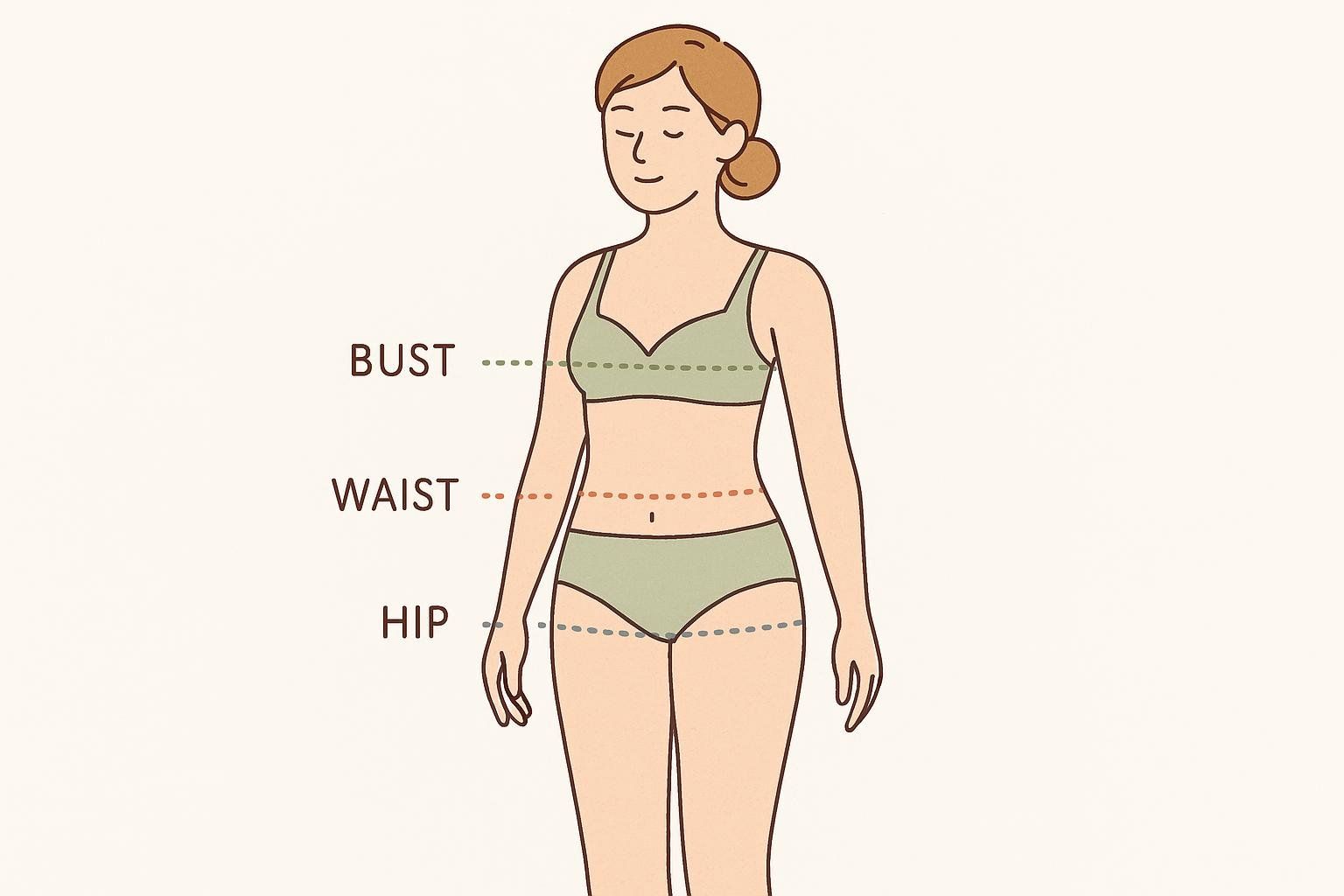
Hourglass Body Type
Characteristics: Balanced bust and hip measurements with a naturally narrow, well-defined waist. This is often considered the "classic" feminine silhouette.
Measurements: Bust and hip measurements are within 5% of each other, with waist measurement at least 25% smaller than both.
Health implications: Hourglass figures typically have lower cardiovascular disease risk compared to apple-shaped bodies, as fat is distributed more evenly between upper and lower body rather than concentrated in the abdominal region.
Pear (Triangle) Body Type
Characteristics: Smaller upper body with fuller hips and thighs. The bust is typically smaller than the hips, creating a triangular silhouette.
Measurements: Hip measurement exceeds bust measurement by at least 5%, with a well-defined waist.
Health implications: Research shows that pear-shaped women have lower risk of several chronic diseases compared to apple shapes. The subcutaneous fat stored in hips and thighs is metabolically less dangerous than abdominal visceral fat.
Apple (Round) Body Type
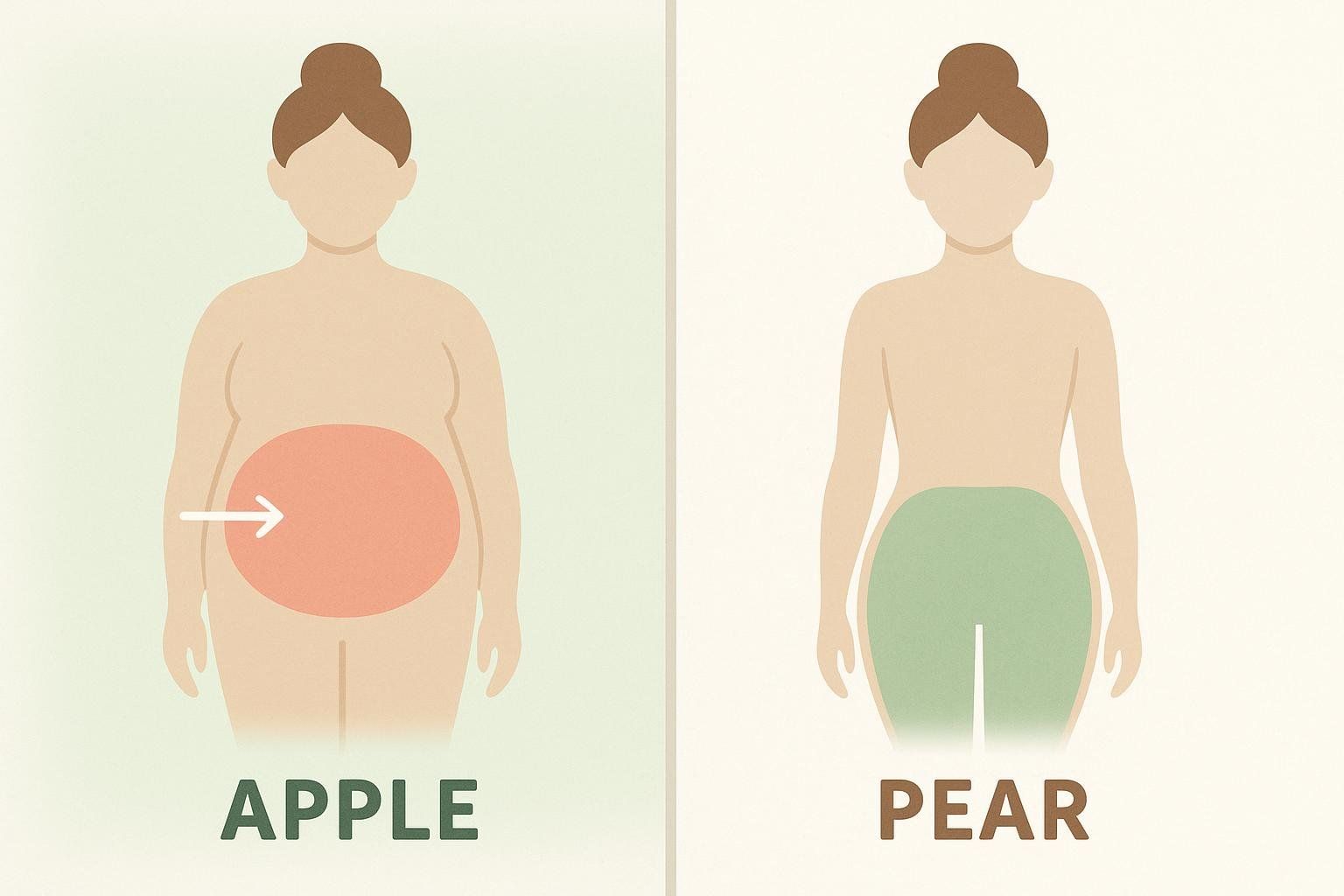
Characteristics: Fuller midsection with weight concentrated around the waist and upper body. Arms and legs tend to remain relatively slender.
Measurements: Waist measurement is equal to or larger than hip measurement, creating minimal waist definition.
Health implications: Apple-shaped individuals have higher risk for cardiovascular disease due to increased visceral fat around vital organs. Importantly, even slender-appearing individuals can have dangerous "hidden" belly fat detectable only through advanced imaging.
Rectangle (Straight) Body Type
Characteristics: Similar measurements across shoulders, waist, and hips with minimal waist definition. Often described as having an athletic or straight-up-and-down silhouette.
Measurements: Bust, waist, and hip measurements fall within 5% of each other, creating minimal curves.
Health implications: Generally lower health risks than apple shapes, though individuals should monitor for potential changes in fat distribution over time, particularly during hormonal shifts like menopause.
Inverted Triangle Body Type
Characteristics: Broader shoulders and bust area compared to narrow hips. Often seen in athletic women with developed upper bodies.
Measurements: Shoulder or bust measurement exceeds hip measurement by at least 5%.
Health implications: May carry some of the same visceral fat accumulation risks as apple-shaped individuals, though this body type typically involves more muscle mass in the upper body rather than excess fat concentration.
The Somatotype System: Genetics Meet Fitness Optimization
Originally developed by psychologist William H. Sheldon in the 1940s, the somatotype classification system focuses on genetic predispositions toward muscle development, fat storage, and metabolic characteristics. Unlike shape-based classification, somatotypes guide fitness and nutrition strategies.

Before implementing any new exercise routine or making significant changes to your training regimen, consult with a qualified healthcare provider or certified fitness professional to ensure the approach is appropriate for your individual health status and goals.
For personalized nutritional planning specific to your goals and health status, consulting a registered dietitian or nutritionist is recommended.
Ectomorph: The Natural Lean Type
Physical characteristics:
- Naturally slender build with narrow shoulders, hips, and joints
- Low body fat percentage with difficulty gaining weight
- Fast metabolism with high calorie requirements
- May struggle to build significant muscle mass, resulting in a less defined look despite low body fat
Training optimization: Ectomorphs typically respond best to prioritizing strength training over cardio, focusing on compound movements with heavier weights and longer rest periods. Hypertrophy and maximal strength phases work best, while excessive cardio can counteract weight and muscle gain goals.
Nutritional needs: May benefit from caloric surplus with emphasis on higher protein intake to support muscle growth. Complex carbohydrates can help fuel workouts and recovery.
Mesomorph: The Athletic Natural
Physical characteristics:
- Naturally muscular and athletic build
- Medium bone structure
- Efficient metabolism allowing relatively easy muscle gain and fat loss
- Responds quickly to training, developing muscle definition with relative ease
Training optimization: Mesomorphs have the flexibility to adapt training based on specific goals. They respond well to varied programming including strength training, cardio, and sport-specific training. They respond best to periodized training that cycles through phases of hypertrophy, strength, and power to align with specific performance or aesthetic goals.

Nutritional needs: Mesomorphs often respond well to balanced diets with adequate protein to support their training goals. Caloric intake can be adjusted relatively easily for either muscle gain or fat loss phases.
Endomorph: The Power Type
Physical characteristics:
- Larger bone structure with naturally higher body fat percentage
- Rounder, softer physique with tendency to store fat easily
- Slower metabolism requiring careful caloric management
- Often struggle with fat loss despite consistent effort
- Gains muscle fairly easily, but requires a dedicated fat loss phase to reveal underlying muscle definition
Training optimization: Training often emphasizes metabolic conditioning and circuit training to boost calorie burn. Higher intensity interval training, shorter rest periods, and incorporating plyometrics can help combat slower metabolism. Strength training remains important for preserving muscle mass during fat loss phases.
Nutritional needs: May benefit from caloric deficit for fat loss with careful macronutrient timing. Higher protein intake can help preserve muscle mass during weight loss phases. A focus on fibrous vegetables and lean proteins can effectively promote satiety and preserve muscle mass, which is crucial during a caloric deficit.
The Critical Health Factor: Fat Distribution and Disease Risk
While both classification systems provide valuable insights, the most crucial health information lies in understanding where your body stores fat. This is where modern science reveals information that external appearance can't detect.
Android vs. Gynoid Fat Distribution: More Than Apples and Pears
Your body stores fat in two primary patterns:
Android (Apple) Distribution
- Fat concentrated around the trunk, abdomen, and upper body
- Associated with increased visceral adipose tissue (VAT) around vital organs
- Linked to higher cardiovascular disease risk, diabetes, and metabolic dysfunction
- More metabolically active fat that releases inflammatory compounds
Gynoid (Pear) Distribution
- Fat stored primarily in hips, thighs, and glutes
- Predominantly subcutaneous fat beneath the skin
- Associated with lower disease risk and better metabolic health
- Fat in these areas may actually provide protective health benefits
The Waist-to-Hip Ratio: A Key Health Metric
Medical research identifies waist-to-hip ratio (WHR) as a crucial health indicator:
How to measure WHR:
- Measure waist circumference at the narrowest point (usually just above the navel)
- Measure hip circumference at the widest point
- Divide waist measurement by hip measurement
Risk thresholds:
- Women: WHR above 0.85 indicates increased health risks
- Men: WHR above 0.9 indicates increased health risks
Health implications of elevated WHR:
- Increased risk of chronic kidney disease
- Higher likelihood of heart attack
- Association with obstructive sleep apnea
- Elevated risk of type 2 diabetes
- Potential fertility complications in women
The Hidden Danger: Visceral Fat in "Normal" Bodies
Appearance can be dangerously misleading, as individuals with seemingly healthy body weights can harbor dangerous levels of visceral fat around their organs. According to the American Heart Association, individuals with excessive belly fat face elevated heart disease risk even when they have a healthy BMI. This "hidden" visceral fat creates the same cardiovascular risks as visible abdominal obesity.

This phenomenon, sometimes called "thin-outside-fat-inside" or TOFI, explains why some people with normal BMI and outwardly healthy appearance still develop obesity-related diseases. This pattern may be more common among:
- Individuals with sedentary lifestyles despite normal weight
- People who lose weight primarily through caloric restriction without exercise
- Those with genetic predisposition to central fat storage
- Post-menopausal women experiencing hormonal fat redistribution
DEXA Scanning: The Gold Standard for Body Composition Analysis
The only way to truly understand your body composition—including hidden visceral fat, muscle mass distribution, and bone density—is through advanced imaging technology. DEXA (Dual-Energy X-ray Absorptiometry) scanning represents the current gold standard for comprehensive body composition analysis.
What DEXA Reveals That Other Methods Cannot
Complete body composition breakdown:
- Precise fat mass, lean mass, and bone density measurements
- Regional analysis showing fat distribution patterns
- Visceral fat assessment revealing hidden health risks
- Muscle mass symmetry and development tracking
Advantages over traditional methods:
- vs. BMI: BMI calculations can't distinguish between muscle and fat, often misclassifying athletic individuals as overweight
- vs. body fat calipers: Calipers only measure subcutaneous fat and suffer from user variability
- vs. bioelectrical impedance: Affected by hydration levels and doesn't provide regional analysis
- vs. visual assessment: Cannot detect internal fat distribution or muscle imbalances
BodySpec's Advanced DEXA Technology
BodySpec utilizes medical-grade DEXA scanners that provide the most accurate available data on body composition. Our technology directly measures and detects the composition of every square inch of your body, offering:
- Precision fat distribution mapping
- Visceral fat quantification
- Muscle mass tracking for training optimization
- Bone density assessment for long-term skeletal health monitoring
This level of detail transforms abstract body type knowledge into actionable health data you can use to optimize your training, nutrition, and health monitoring strategies.
Practical Application: Using Body Type Knowledge for Health and Fitness
Understanding your body type—both shape-based and somatotype—provides a roadmap for personalized health optimization:
For Apple-Shaped Individuals
Health priorities:
- Regular monitoring of waist-to-hip ratio
- DEXA scanning to track visceral fat levels
- Focus on metabolic health markers (blood sugar, blood pressure, lipid panels)
Exercise emphasis:
- High-intensity interval training for metabolic benefits
- Strength training to preserve muscle mass
- Emphasize planks and other movements that build functional core strength in the midsection
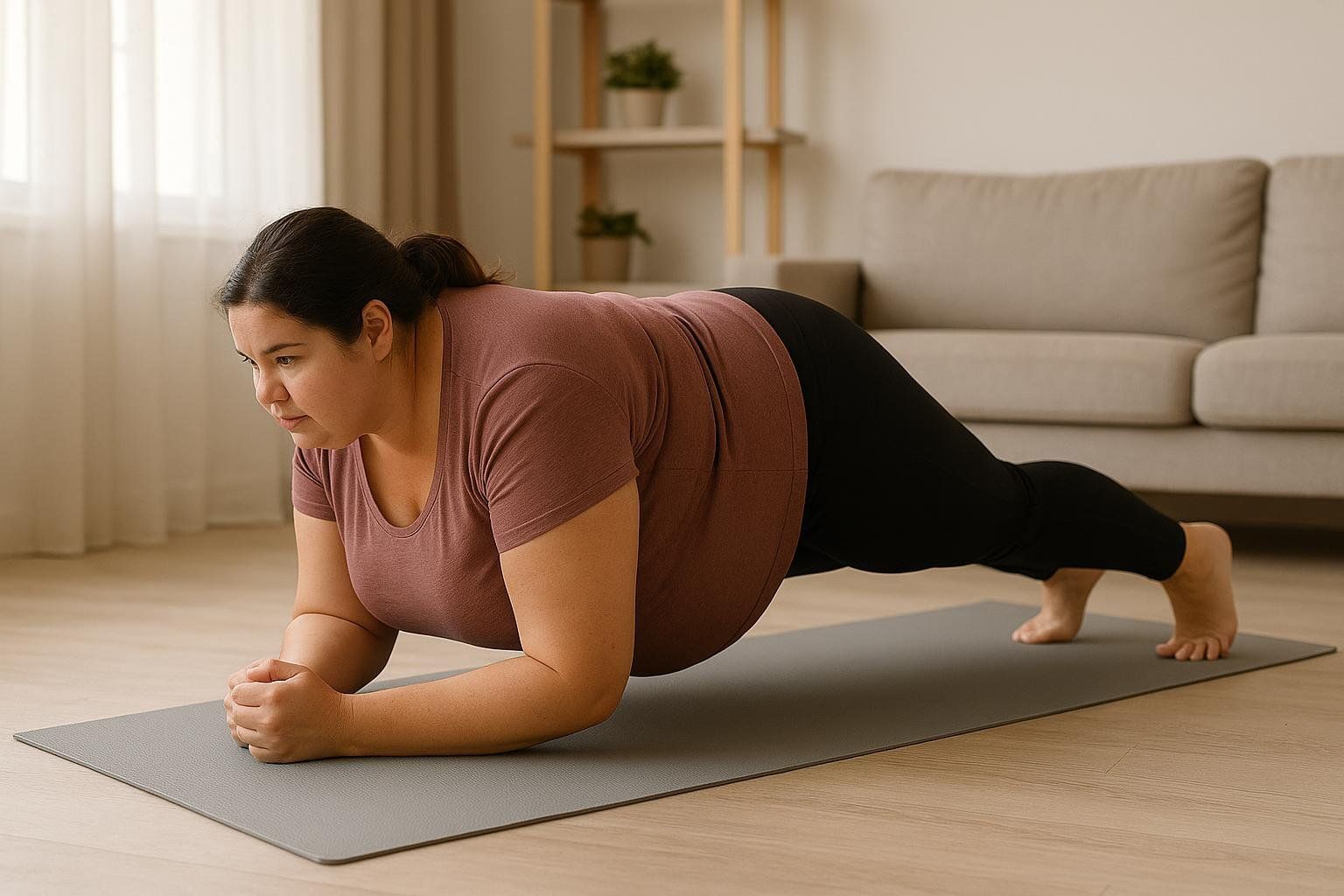
For Pear-Shaped Individuals
Health priorities:
- Regular body composition monitoring to maintain favorable fat distribution patterns
- DEXA scanning to track changes during hormonal transitions like menopause
- Monitor for potential shifts toward central fat storage with age
Health advantages:
- Lower cardiovascular disease risk
- Better insulin sensitivity typically
- Protective fat distribution patterns
Training optimization:
- Balance lower body strength with upper body development
- Cardiovascular exercise for overall health
- Flexibility and mobility work for lower body
For Rectangle-Shaped Individuals
Health priorities:
- Monitor for changes in fat distribution with age or hormonal fluctuations
- Regular body composition tracking to detect shifts toward central fat storage
- Maintain overall metabolic health through consistent exercise
Exercise emphasis:
- Combination training emphasizing both strength and cardiovascular fitness (circuit training, CrossFit-style workouts)
- Progressive overload strength training to build muscle definition (compound movements like squats, deadlifts, pull-ups)
- Focus on glute and lat development exercises (hip thrusts, rows, pull-ups) to create more defined waist contrast
For Inverted Triangle Individuals
Health priorities:
- Monitor visceral fat accumulation despite potentially high muscle mass
- Balance upper body strength with lower body development
- Watch for changes in fat distribution with hormonal changes
Training optimization:
- Balanced strength training with extra attention to lower body development
- Maintain cardiovascular fitness for overall health
- Consider sports or activities that utilize full-body movement patterns
Hormonal Influences and Life Stage Considerations
Body type isn't static—it evolves throughout life due to hormonal changes, aging, and lifestyle factors:
Menopause and Body Shape Changes
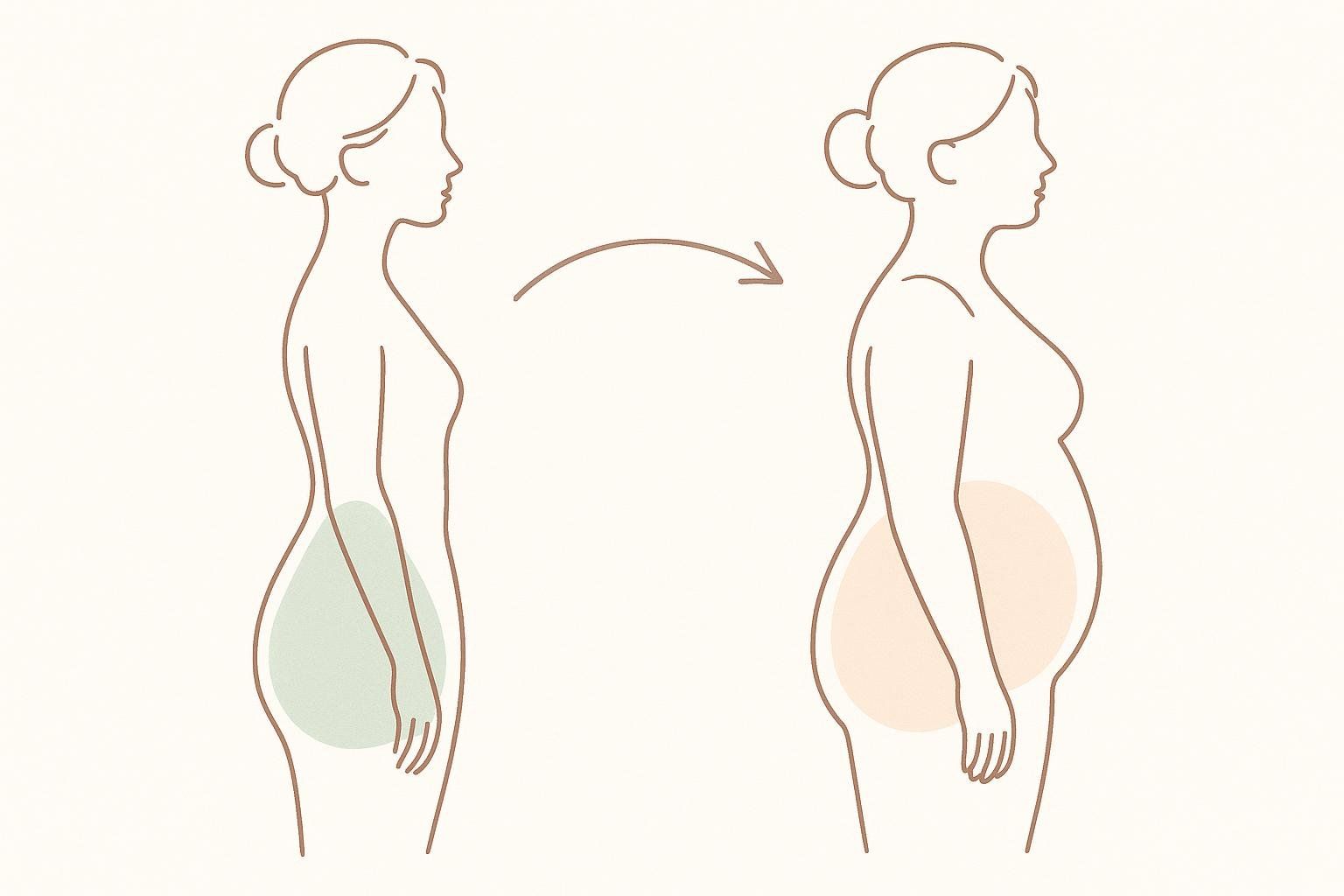
Many women experience a shift from gynoid to android fat distribution during menopause due to declining estrogen levels. This makes regular body composition monitoring particularly important for women over 45.
Age-Related Changes
As we age, our bodies undergo predictable changes in composition and function:
- According to the Cleveland Clinic, gradual muscle loss (sarcopenia) often begins in the 30s or 40s
- The American Academy of Orthopaedic Surgeons states that peak bone mass is achieved between ages 25-30, with gradual decline after age 40
- Harvard Health reports metabolic decline of approximately 0.7% annually after age 60
- Medical research shows preferential central fat accumulation associated with menopause
These changes highlight the importance of regular body composition monitoring throughout the lifespan.
Lifestyle Impact on Body Type
- Strength training can improve muscle mass regardless of somatotype
- Cardiovascular exercise benefits all body types but emphasis varies
- Nutritional strategies can optimize body composition within genetic parameters
- Stress management affects fat storage patterns, particularly visceral fat
Beyond Labels: A Personalized Approach to Health
While body type classifications provide valuable frameworks, remember that:
- Most people combine characteristics from multiple categories
- Body type can change through lifestyle modifications
- Health risks vary individually even within the same body type
- Regular monitoring provides more value than one-time assessment
The key is using body type knowledge as a starting point for personalized health optimization rather than a limiting factor. Your genetics provide the blueprint, but your lifestyle choices determine the final structure.
Conclusion: Knowledge-Powered Health Optimization
Understanding your female body type—whether through shape-based classification, somatotype analysis, or both—provides powerful insights for health optimization. However, the most actionable information comes from understanding your actual body composition through advanced imaging technology. Regular DEXA scanning reveals the complete picture: not just whether you're an "apple" or "pear," but precisely how much visceral fat surrounds your organs, where you're building muscle most effectively, and how your body composition changes over time. Whether you identify as an ectomorphic rectangle, an endomorphic pear, or any other combination, the key to optimal health lies in understanding what's happening beneath the surface. This comprehensive, data-driven approach ensures lasting wellness decisions built on scientific evidence rather than superficial assumptions.


